Armed Forces Families and Safeguarding Overseas Survey 2023
Published 13 November 2024
Research authors
This research was undertaken by the Ministry of Defence. The conclusions and findings presented in this report reflects the information gathered during the research in 2023. This research, including analysis and quality assurance was completed in June 2024.
List of abbreviations
AFFS Armed Forces Families & Safeguarding Team
DPRE Defence People Research & Evaluation Team
JSP Joint Service Publication
MOD Ministry of Defence
SP Service Person/Service Personnel
1. Introduction and purpose
1.1 Introduction
The UK Armed Forces Families Strategy 2022-32, launched in January 2022, provides a framework for government, service providers, and other sectors to improve outcomes for families, and strengthen operational effectiveness. It was developed with the involvement of a pan-government Stakeholder Group and reflects, but is not exclusively driven by, the commitments in the Government’s response to the Selous Report (Living In Our Shoes.[footnote 1]
The Strategy is made up of eight interdependent workstreams and is owned by the Armed Forces Families and Safeguarding (AFFS) team.
1.2 Purpose of the research
AFFS commissioned a survey aimed at Armed Forces families living overseas to better understand the lived experience, and provide an evidence base to help review current policy processes and develop future policy.
The survey was for current Serving Personnel and families assigned overseas, and focusses on childcare, spousal / partner employment, communications, education, safeguarding and accommodation.
2. Research objectives
The overall objective for this research project was:
To understand if the AFFS objective ‘to offer choice and flexibility to allow personnel to serve their nation and raise a family at the same time’ was being addressed or whether improvements could be made to current policies to improve the overseas living experience and ensure the overall vision of the strategy was met.
The research also aimed to explore the following topics:
- assignment preferences
- communications methods
- childcare and education considerations
- spousal employment opportunities
- support services
3. Research methods
A mixed-method survey, of closed and open-text questions, was used as this focuses on deepening understanding and measure of the Service family community lived experiences. While the research insights represent a range of SP and family views and provide informed outputs, this research is not reflective of the entire Armed Forces.
This research method was designed and conducted to align with:
3.1 Sampling
The survey used opportunity sampling and targeted our overseas Service family community. There was no target sample size, the survey aimed to collect as many responses as possible during the period it was live.
The survey was distributed in electronic format via overseas communications channels.
3.2 Data collection and analysis
Data collection occurred between in July/August 2023 and this delivered a total of 757 participant contributions.
Data Analysis
Quantitative data from the survey responses were analysed by calculating percentages based on the total number of respondents for each question.
Qualitative data, obtained from free-text questions was analysed using thematic analysis principles. Responses were manually reviewed and grouped according to common themes e.g., accommodation.
Some survey questions were targeted only towards specific sub-sets of the target population e.g. SPs only. When analysed, only responses from this population were used. Where this has taken place, it is indicated as such throughout the report e.g., ‘Of all accompanied Service personnel’. Service personnel include dual-serving personnel.
Participants were able to skip/miss questions. Results state the number and percentage of non-responders for all relevant questions for transparency purposes.
Weighting and Generalisability
Only 17 respondents submitted their gender, service (Army, Navy, RAF), contract type (regular or reserve) and rank. Therefore, results could not be weighted, and some Services, ranks, or locations may be over or under-represented in the data.
Participants were asked to state their assigned overseas country. All respondents answered this question and therefore, the analysis can be confident that only SP and their families/partners who have been assigned overseas completed the survey.
Respondents could have completed the survey multiple times, and multiple members of the same family may have completed the survey. As the survey is anonymous, duplicate responses from the same person/family cannot be identified or removed. Efforts have been made to identify duplication for example, by checking free text responses, and none were found, however it is not possible to be certain.
As survey used opportunity rather than random sampling, responses were not weighted and there is a risk of duplicate responses, no comparisons between groups or significance testing was undertaken.
Given data is unweighted, participants may have submitted multiple responses and significance testing or confidence intervals cannot be established, these results represent the views of survey respondents only. The results cannot be generalised to represent the views of all overseas SP and SP families.
3.3 Data Storage, Ethics and Quality Assurance
The survey was anonymous. Data is only available to a small group of civilian researchers working on the analysis and report production and the data does not contain any identifier which can be linked back to the Service person or their spouse/civil partner. Separately, we have a list of contact email addresses, provided by willing participants, which may be used by AFFS to contact participants for future research.
All staff involved in this survey report production process adhere to the MOD and Civil Service data protection regulations. In addition, staff involved in the production of this report must follow the relevant codes of practice for their professional groups; the Government Statistical Service (GSS) and the Government Social Research (GSR) Profession. All data is stored, accessed, and analysed using the MOD’s secure IT system. Prior to taking part, participants were informed of the purpose of the research and how data would be collected and stored. By continuing into the survey, we assumed participants were consenting to the research.
As this survey was a service evaluation, Ministry of Defence Research & Ethics review was not required. Best practices from Government Social Research (GSR) Profession were followed.
The data tables and the content of the narrative report were quality assured by a member of the Government Social Research profession.
4. Findings
A total (N) of 757 people responded to the survey from 50 countries across the world.
A total (n) of 523 people who responded to the survey were serving personnel (including dual serving couples). 71% (n=536) of respondents had children. 71% (n=357) of serving personnel who responded to the survey had children. 67% (n=506) of respondents were serving members of the Armed Forces. 2% (n=17) of respondents were dual-serving couples. 31% (n=234) of respondents were spouses/partners of members of the Armed Forces. Of the Service personnel (including dual serving couples) who have children and responded to the survey (n=357):
- 49% (n=255) had their child accompany them overseas.
- 14% (n=75) did not have their children accompany them overseas.
- 5% (n=27) had at least one child accompany them overseas and at least one child back in their home country.
All survey respondents (N=757) provided their assignment country. Responses were from our Service family community across 52 countries. The largest response rates were received from Cyprus, where 33% of people who answered the survey were assigned, 15% in USA, and 7% were in Germany.
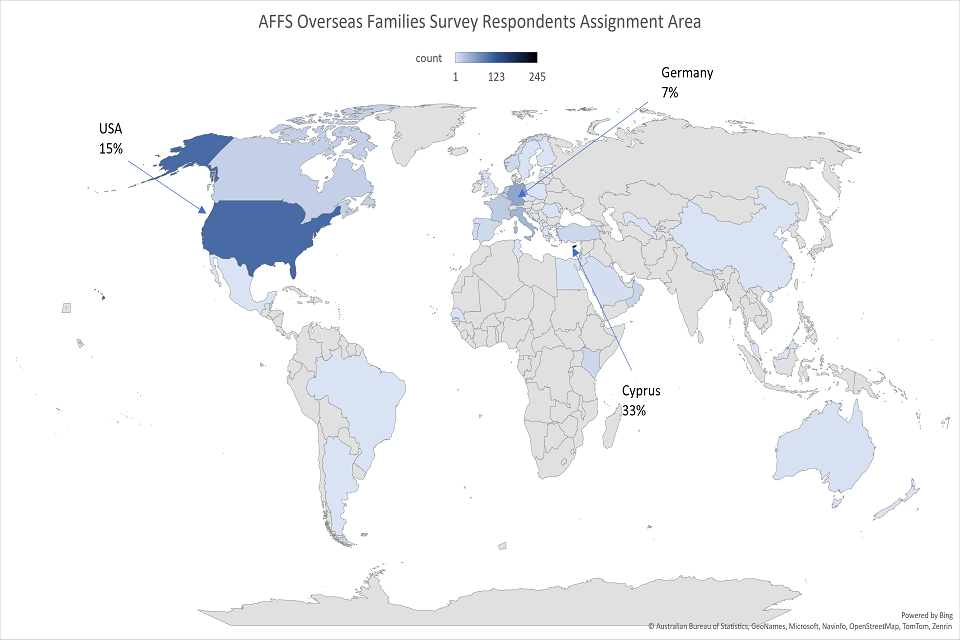
4.1 Assignment
Of all survey respondents(N=757), 88% (n=664) were accompanied or accompanying on their overseas assignment, 6% (n=43) were unaccompanied and 7% (n=50) of respondents did not answer this question.
Of all accompanied SP who responded to the survey (n=432), a total of 58% (n=251) were on their first accompanied overseas assignment (see figure 1), 95% (n=409) were in their preferred location. Only, 1% (n=6) were not assigned to their first choice and 4% (n=17) had no choice at all (see figure 2).
We coded the free text responses from SP and the top 3 cited reasons why their spouse/partner/family did not accompany were:
- spousal employment
- eligibility
- education of children
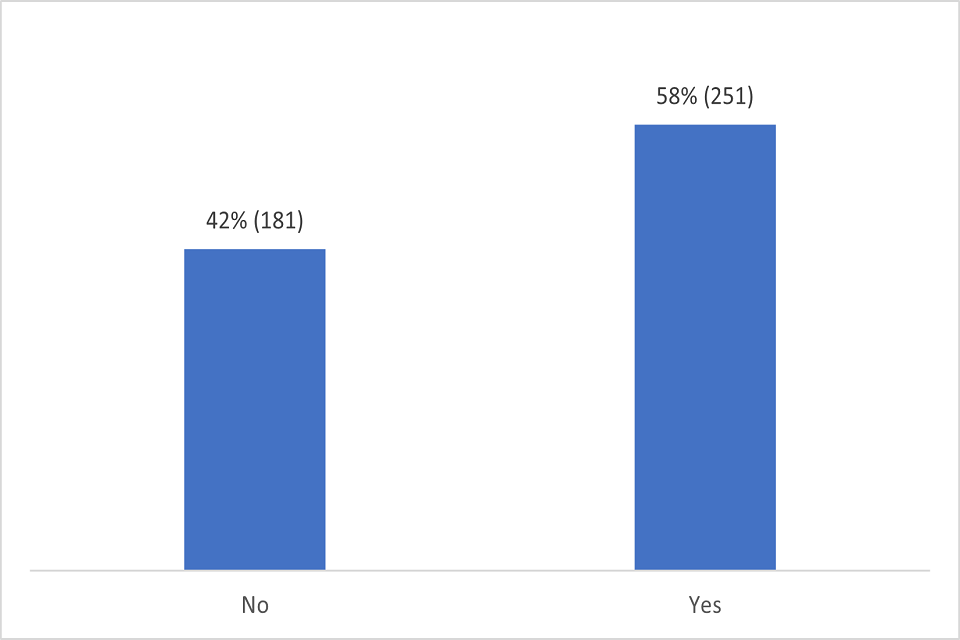
Figure 1 – Bar graph representing results to the question: ‘Is this your first accompanied overseas assignment?’ for all accompanied SP who responded to the survey.
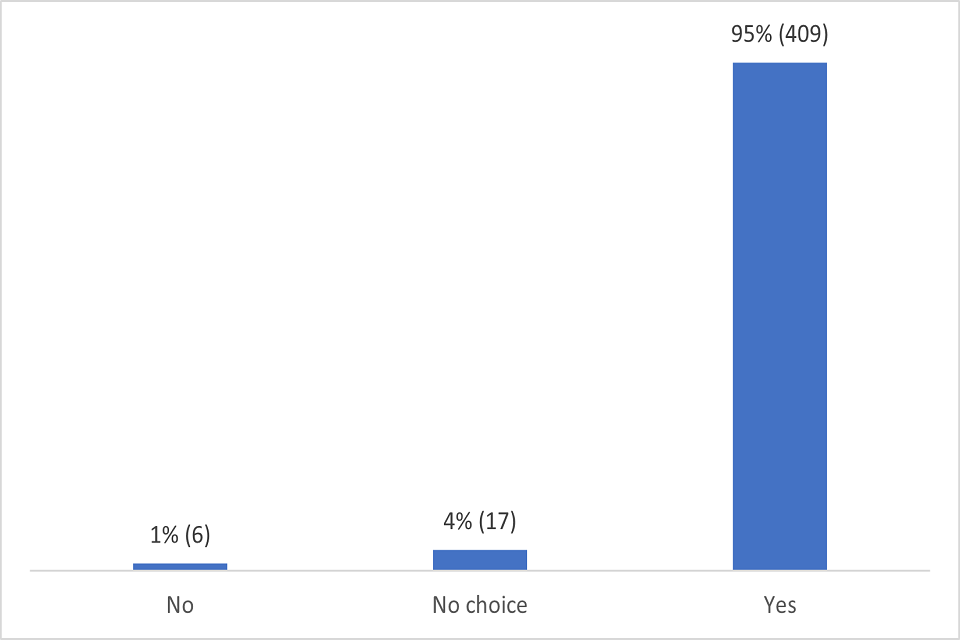
Figure 2 – Bar graph representing results to the question ‘Was current posting one of the Serving person’s preferences to be posted to?’ for all accompanied SP who responded to the survey.
4.2 Communications
Of all accompanied SP survey respondents (n=432), 57% (n=244) received all the information they/their family needed prior to their assignment, 7% (n=31) did not respond to this question.
Of all accompanied SP survey respondents (n=432), 46% (n=199) advised their non-serving spouse/partner were able to access the support or advice that they needed during their current overseas assignment and 7% (n=31) did not respond to this question (see figure 3).
Of those respondents who advised that they did not receive all of the information they/their family needed prior to their assignment (n=280), thematic grouping of the free text responses revealed that overall, respondents felt general information about the entire assignment was missing but the top 3 themes were location specific information, schooling and spousal employment.
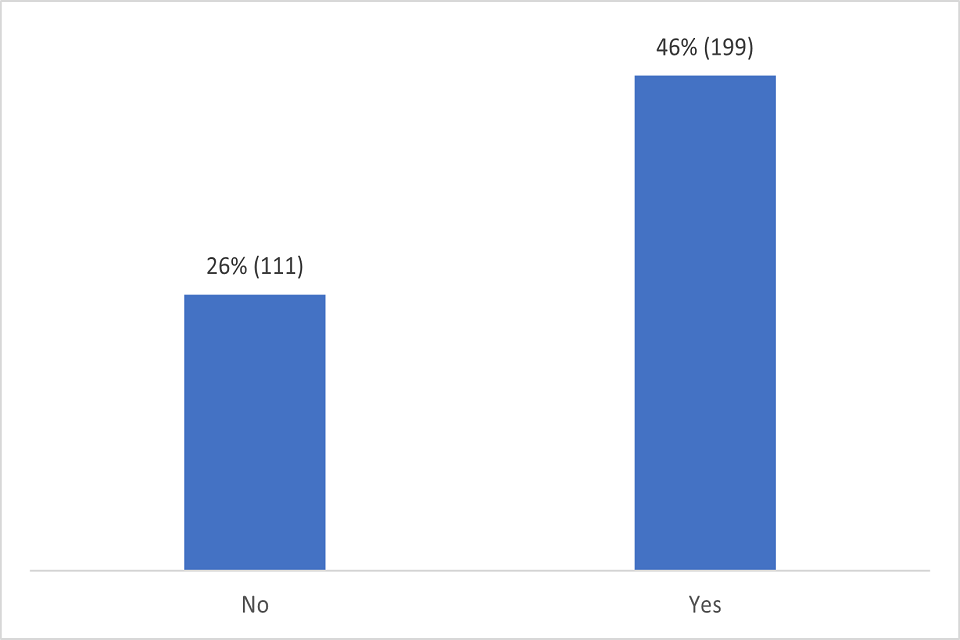
Figure 3 – Bar graph representing results to the question ‘During the current overseas assignment has your non-Serving spouse/partner been able to access the support or advise they needed?’ for all accompanied SP who responded to the survey.
4.3 Spousal employment
Of the spouses/partners who responded to the survey (n=234), 86% (n=200) were working prior to the current overseas assignment, 8% (n=18) were not working prior to the current overseas assignment and 7% (n=16) did not answer this question (see figure 4).
Of spouses/partners who responded to the survey (n=234),40% (n=94) were working while on assignment overseas, 53% (n=124) were not working and 7% (n=16) did not answer this question. (see figure 5).
Of spouses/partners who responded to the survey (n=234), 37% (n=87) were seeking employment while overseas, 38% (n=89) were not seeking employment and 25% (n=58) did not answer this question (see figure 6).
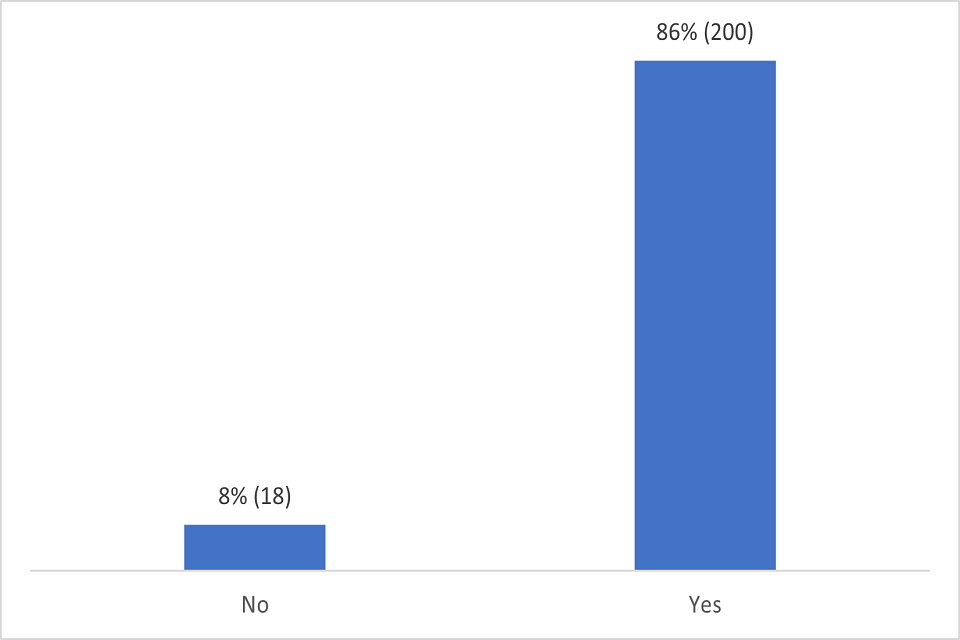
Figure 4 – Bar graph representing results to the question ‘Prior to the overseas assignment was the non-Serving spouse/partner working?’ for all spouses/partners who responded to the survey.

Figure 5 – Bar graph representing results to the question ‘Is the non-Serving spouse/partner working while overseas?’ for all the spouses/partners who responded to the survey.
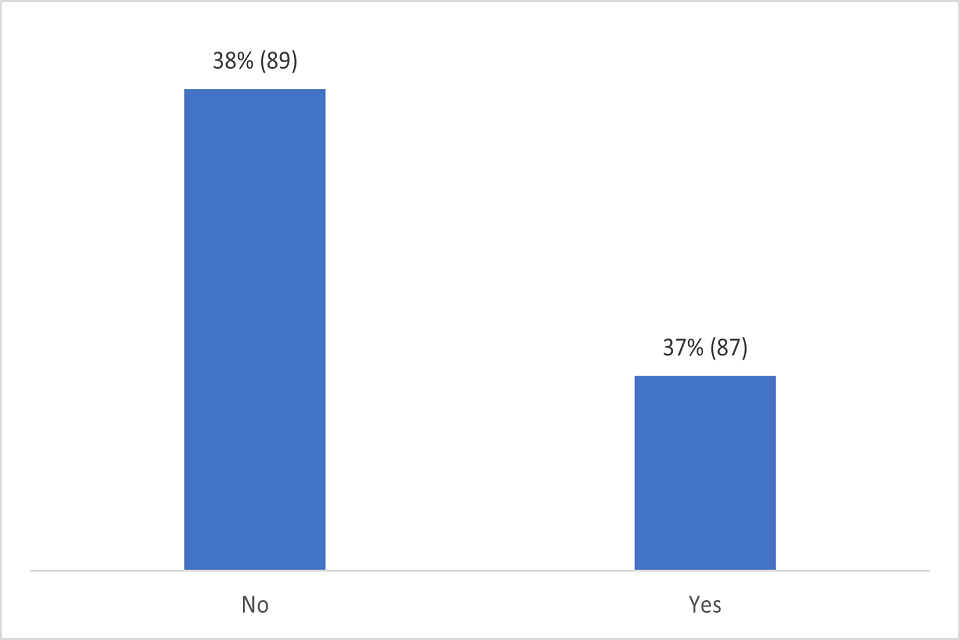
Figure 6 – Bar graph representing results to the question ‘Is the non-Serving partner/spouse actively seeking employment while overseas?’ for all the spouses/partners who responded to the survey.
4.4 Childcare and education
Of spouses/partners with children (n=179), 59% (n=138) had child(ren) accompany them overseas, 14% (n=32) did not have child(ren) accompany them overseas, 4% (n=9) have child(ren) overseas and back in their home country and 24% (n=55) did not answer this question.
Of spouses/partners with children who had accompanied them to the overseas assignment (n=147), 93% (n=137) said they did not used childcare outside of normal school hours (see figure 7). Of those who did not use childcare,73% (n=100), said it was because it was not needed, and 27% (n=37) because it did not meet their needs (see figure 8).
Of all respondents to the survey (N=757), 57% (n=429) had children accompany them to their overseas assignment, 14% (n=107) did not have children accompanying them overseas and 29% (n=221) did not answer this question.
Of all respondents who had children accompanying them to their overseas assignment (n=429), only 12% (n=51) felt their child/children’s needs were being met at their early years/school setting and 1% (n=6) felt they were not (see figure 9).
We also asked all respondents, who had children accompanying them to their overseas assignment (n=429), if they feel their child/children are making progress at their early years/school setting. Of those who answered, 12% (n=52) felt their child/children were making progress and, 1% (n=5) did not feel they were making progress (see figure 10).
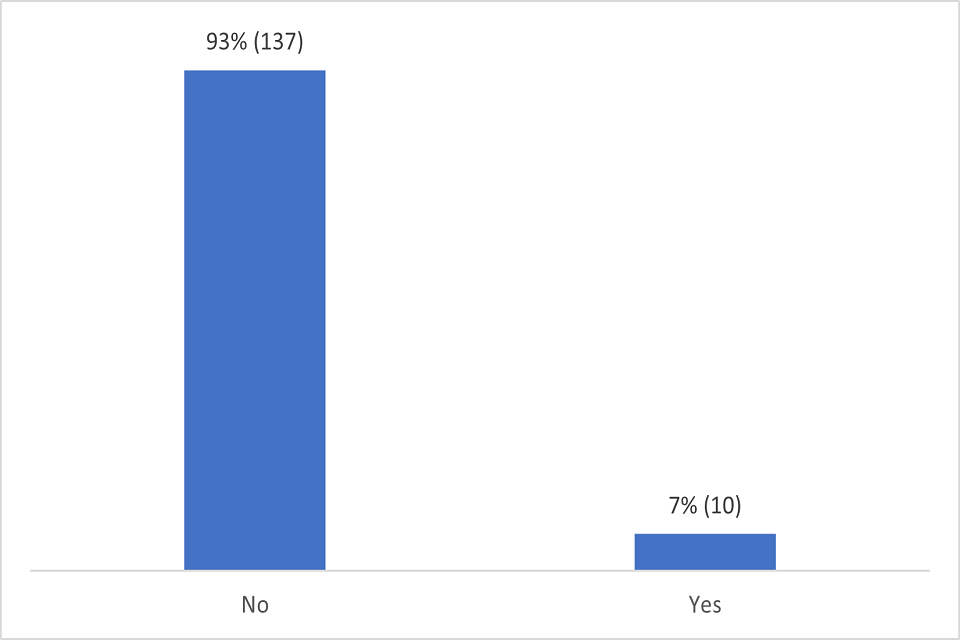
Figure 7 – Bar graph representing results to the question ‘Do you use childcare for your school-aged children outside of normal school hours currently?’ for all spouses/partners with children who had accompanied them to the overseas assignment.

Figure 8 – Bar graph representing results to the question ‘Why do you not use childcare?’ for all spouses/partners with children who had accompanied them to the overseas assignment but did not use childcare.
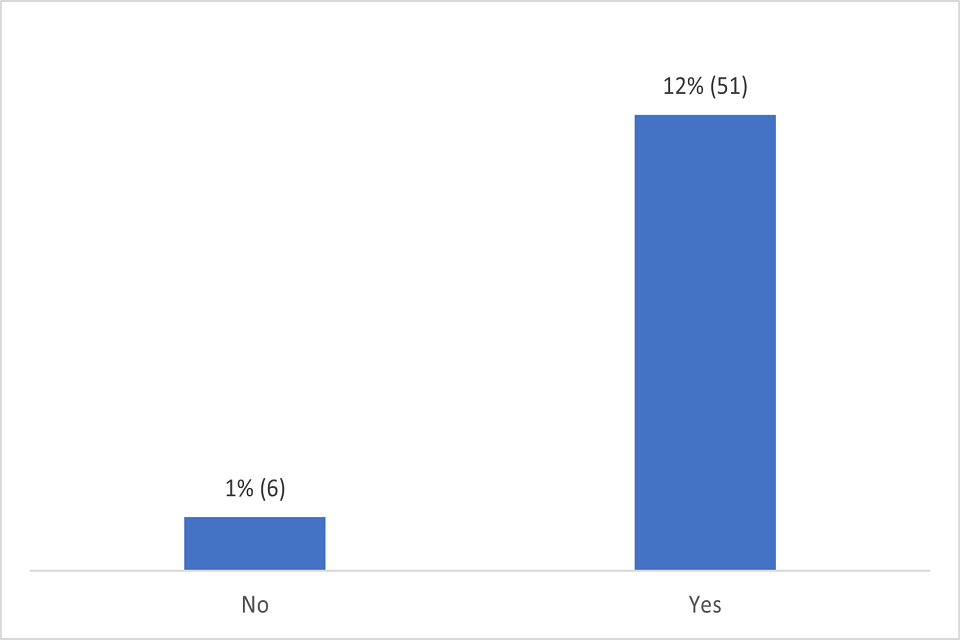
Figure 9 – Bar graph representing results to the question ‘Do you think that your child/ren’s needs are being met at their Early Years/School setting?’ for all respondents who answered the question.
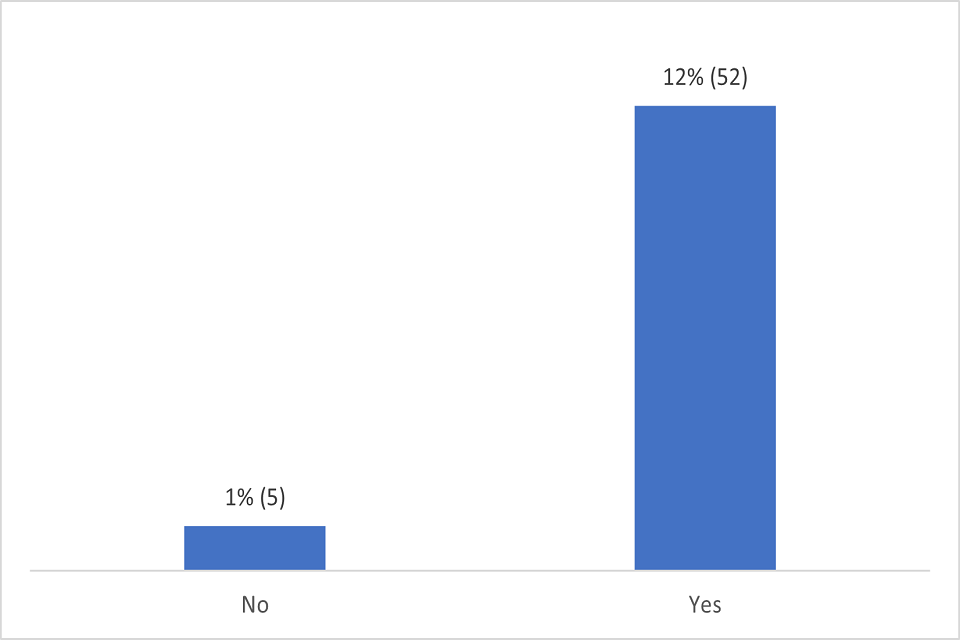
Figure 10 – Bar graph representing results to the question ‘Thinking about your child’s (or children’s) current Early Years/School setting would you say that they are making progress at the setting?’ for all respondents who answered the question.
4.5 Accommodation
There were no missing responses to any of the questions reported below.
Of all respondents to the survey (N=757), 83% (n=629) said the MoD found their overseas accommodation with 17% (n=128) finding accommodation themselves.
Of all respondents to the survey (N=757), 78% (n=572) confirmed they had no choice of their overseas accommodation, whereas 22% (n=165) did have a choice.
Of all respondents to the survey (N=757), 33% (n=251) said their accommodation lacked facilities they would usually expect to find in the UK. Thematic grouping of the free text responses from all of our respondents, revealed the top 3 cited facilities believed to be lacking that you would normally expect to find in the UK were:
- better overall facilities
- heating
- air conditioning
To note, air conditioning was given as an example in the question which may have prompted respondents to write this in their answer.
5. Conclusions
This research has offered insights into the experiences of Service families within our overseas communities. AFFS would like to thank all participants for responding to our survey. These findings provide AFFS with an initial understanding of how our policies are being experienced by some Service families overseas. These findings will be used to identify areas which require further explorative work in order to ensure our policies can improve the lived experiences of our Service family community. AFFS will use the findings about communications to support our ongoing project to improve the availability and accessibility of information available to our Service family community.
The research received contributions from a broad group of SPs and spouses/partners of SP; however, the research was neither representative of the SP population overseas nor reflective of the entire Armed Forces.
6. Limitations
Limitations to the researcher were recognised; as the survey used opportunity responses could not be weighted and given that the data was unweighted, participants may have submitted multiple responses and significance testing or confidence intervals could not be established, therefore results represented the views of survey respondents only.
References
Living in our shoes: understanding the needs of UK Armed Forces families
